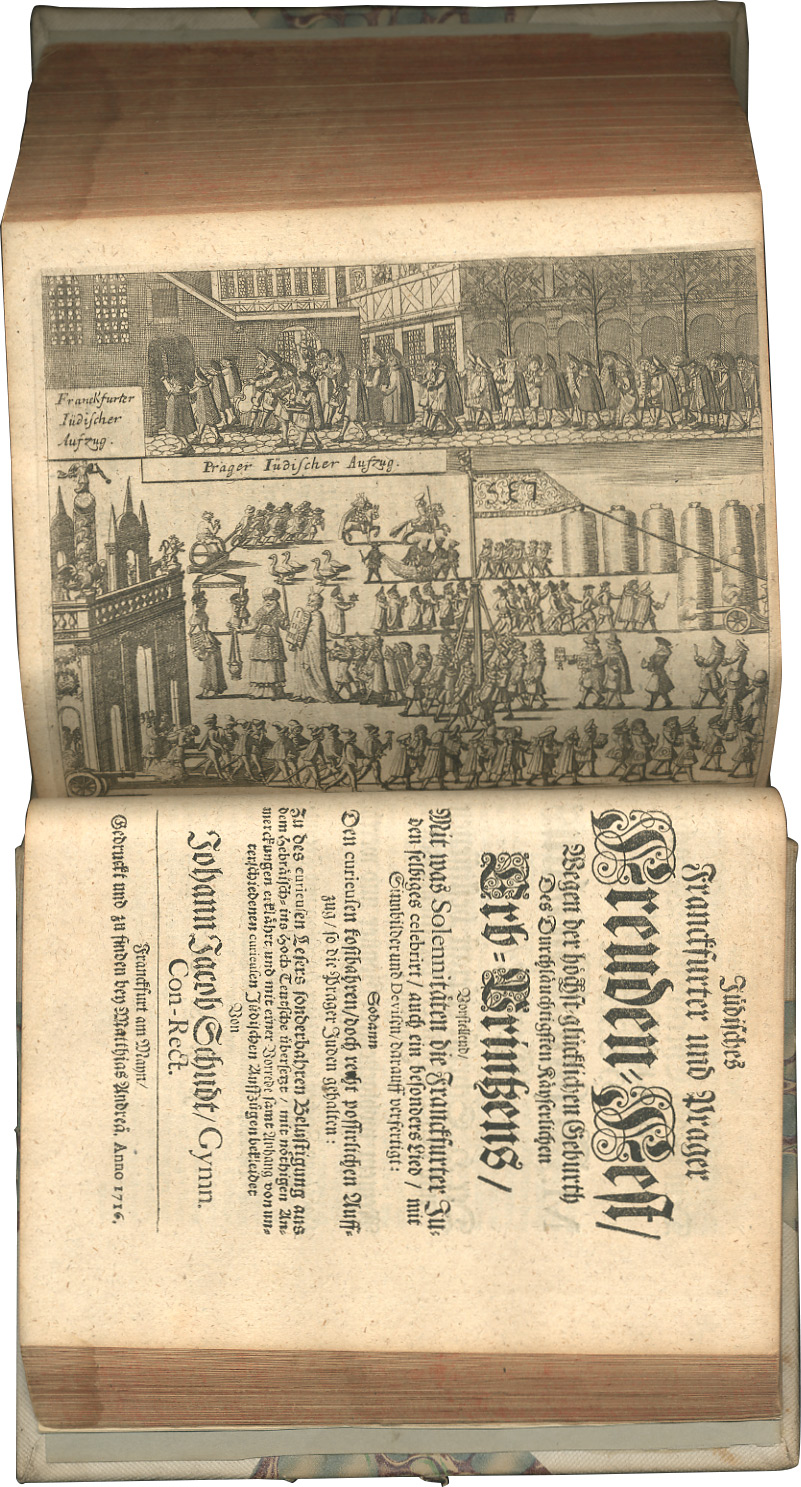In May 1716, cities across the Holy Roman Empire celebrated the long-awaited birth of a son and heir to the throne to Holy Roman Emperor Charles VI and his wife, Elisabeth of Wolfenbüttel, with processions, illuminations and festivities of various sorts. This print depicts public celebrations held by the Jewish communities of Frankfurt and Prague. In the "Franckfurter Jüdischer Aufzug" (Frankfurt Jewish Procession) depicted above, rows of Jewish musicians lead a group of men through the city streets and into the synagogue, where, according to the accompanying text, rabbis preached sermons and psalms of thanksgiving were recite. The "Prager Jüdischer Aufzug" (Prague Jewish Procession) below shows a much more elaborately staged event, akin to a Baroque royal festival. Men on horseback lead classical and biblical figures, New World oddities, a large communal banner hoisted by the community's butchers and ritual slaughterers, rabbis and students, and more as they pass through a triumphal arch. In both cities, the political aim of showing homage to the royal family on this important occasion is coupled with a display of cultural integration including proficiency in musical, linguistic and artistic norms of the surrounding societies.
The print appeared as a fold-out insert in a small book originally published in 1716 by Christian Hebraist Johann Jacob Schudt as Jüdisches Franckfurter und Prager Freunden-Fest. In it, Schudt reprinted two publications written in German or Yiddish in Hebrew characters, one about events in Frankfurt and another from Prague. The reprinted original language of each publication is interspersed with German translations and explanations. To this, Schudt added his own highly derisive introduction, decrying the Jews' simultaneous arrogance and obsequiousness. The entire text of Jüdisches Franckfurter und Prager Freunden-Fest along with the illustration was then incorporated into the fourth volume of Schudt's monumental ethnography of Frankfurt Jewry, Jüdisches Merckwürdigkeiten, published two years later, four years after the first three volumes had appeared. Thus, celebratory events staged by Jews for Christian eyes, perhaps with Christian artistic collaboration of some sort, were reported upon and printed up by Jews for distribution and posterity, then reprinted by a Christian, with his own views added, for a mostly Christian audience that would also include
